‘A walk back in time’
Published 1:06 pm Thursday, August 30, 2018
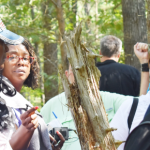
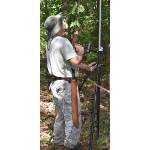
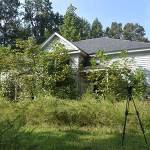
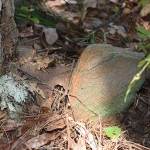
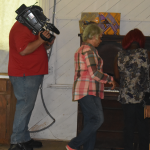
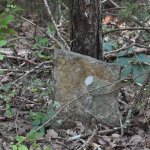

The Rev. Murial Miller Branch recalls the words her teacher, Mary E. Gilliams, told her and other Pine Grove School students.
She gave an example of a student doing a math problem on the chalkboard. Branch said if a student said, ‘we can’t do it,’
“She would tell us, ‘nonsense!’”
Several members of the community, in addition to representatives of the Green Ridge landfill, representatives of landfill designer Draper Aden, engineering company Highmark Engineering, an archeologist and members of the press visited patches of woods along Pinegrove Road, just outside the proposed landfill site, to look at the school and examine gravestones along the property.
Branch first entered the school in 1948. The school still stands 70 years later.
The chalkboards are pocked, pitted with chalk marks. A piano stands in the right hand corner. The outside of the school is overgrown and surrounded by foliage, but that has not deterred Branch or others from visiting the school, taking family members and friends with them.
Last time Branch visited back in December, she said she took great-nieces and great-nephews.
“It brings back so many wonderful memories of how we took so little and yet we were educated,” Branch said.
She said the school used secondhand books and made the best of them. They learned about African-American leaders, about history, about civic involvement.
Branch remembers being a voracious reader, and feeling a sense of pride of being trusted by Ms. Gilliam, who collected books for the library, to borrow some of the books overnight.
She said students had plays, spelling bees, and sang accompanied by the piano.
She said grades were distinguished by row, the front row being pre-primer with the upper grades sitting further back.
Branch previously addressed the Cumberland County Planning Commission about the historical significance of the school and its close proximity to the landfill, presenting a letter from nonprofit Preservation Virginia that noted that Pine Grove was one of 360 schools funded by philanthropist Julius Rosenwald. Of the 360 schools, it’s likely that less than a quarter of the schools remain intact.
Describing visiting the school with reporters, Del. Delores McQuinn said it was “a walk back in time.”
McQuinn, who represents the 70th district, has spoken out about preserving African-American history in Virginia. Earlier this year, she introduced a bill, HB284, to the Virginia General Assembly asking that localities or owners of historical African-American cemeteries receive funding.
Using trucks and ATVs, drivers transported representatives of the landfill, engineers, the archeologist and press members into the woods, approximately half a mile off Pinegrove Road, to look at gravestones.
Blue ribbon marked the gravestone sites, where timber companies previous placed the ribbon to make sure no one cut down the trees.
Engineers used a Global Positioning System (GPS) device, attached to a long pole, to determine the exact coordinates of the gravestones for the archeologist to come back and examine later.
Pinegrove Road is located on the western area of the landfill, and encompasses approximately 300 acres.
The archeologist, Lyle Browning of Richmond, would later determine in the event bones can be found, of how old the gravesites are and the race of the individuals buried.
Green Ridge Vice President Jerry Cifor said if the gravestones happen to be part of a graveyard, or graves designated for enslaved people, crew will place a fence around the gravesites. He said the area of the woods that contain some of the gravesites would be in the area where Pinegrove Road would be relocated if the western end of the landfill is built.
He estimated there is a buffer of approximately 1,000 feet between the gravesites and the landfill site.
Cifor said the gravesites are on the landfill property but are located in the buffer area. He said Green Ridge received photos from members of the public of the gravestones.
Cifor said that people walking through the woods would be considered trespassing on the property, but said no one has been charged with trespassing.
Cifor encouraged members of the public who know of any gravestone sites to contact Green Ridge at greenridgeva.com or call (844) 545-7112.
Cifor said the decision to pursue the gravestones is due to analyzes of cultural resources being a component of applying for a permit with the Virginia Department of Environmental Quality (VDEQ).
McQuinn said she wanted to visit the school and gravesites in person to understand the issue for herself. She encouraged state and area leaders to advocate for preserving the school and gravestones’ history.
“It’s incumbent upon legislators, and those who are in the Cumberland County Board of Supervisors and others who say, you know what, we’re going to do what needs to be done to address this,” McQuinn told reporters.
McQuinn said seeing the graves harkens a painful aspect of African-American and American history.
“To see them, these graves, tucked back in the woods, abandoned, nobody giving them any attention, I’m saddened by that because it’s almost as if reliving — and not necessarily myself — but … having to relive a time where no one gave them attention,” McQuinn said about African-American people. “They didn’t have a voice. They were out of sight, out of mind.”












